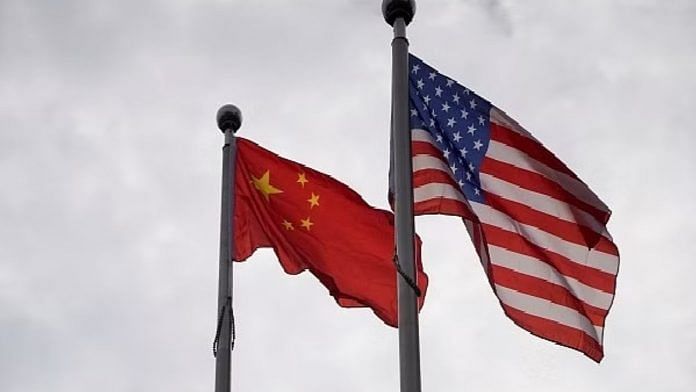
China appears to have ended 2024 on a high note, quietly unveiling its sixth-generation stealth fighters during their maiden test flights over Sichuan on 26 December, coinciding with Mao Zedong’s 131st birth anniversary.
Videos and photos of the jets quickly emerged, surprising many as earlier projections suggested these aircraft would not be ready for several more years. Alongside this, China unveiled a new generation of early-warning aircraft with advanced anti-stealth capabilities.
On Chinese social media, the stealth jets have garnered praise for their sleek design and remarkable speed. Set to become the first country to possess a sixth-generation fighter, the aircraft have been likened to “a flat dart, with no tail hanging at all.”
Some Chinese commentators have also noted their larger size compared to the J-20 with feature enhanced fuel and weapon capacities, longer endurance, and superior firepower. These upgrades not only boost stealth and maneuverability but also allow for longer operational ranges and heavier payloads.
As versatile multi-role fighter-bombers, they excel in air combat while also being capable of executing ground and sea strikes. Powered by three engines, these jets have a range of over 1,000 kilometres, enabling them to carry ultra-long-range, air-to-air and hypersonic anti-ship missiles. Their sixth-generation technology allows strikes from greater distances, and with high speed, altitude, and advanced stealth, they can evade locked-on missiles.
Although no official statements have been issued, Chinese media and social platforms have been abuzz with analysis of the sixth-generation jets. Some users have referred to the test flights as a “Christmas gift” to the US, underscoring the widening technological divide between the two nations.
Many Chinese commentators are arguing that the US has not only lost its monopoly over the skies but also its edge in science and technology. With the arrival of these jets, they claim, a new era is dawning—one where China leads and surpasses the US in airpower.
Recent discussions have focused on the slow progress of American airpower, pointing out that 27 years have passed since the F-22’s debut in 1997. Analysts have noted the US military’s declining industrial capacity and corruption scandals, which have inflated costs and delayed the development of its own sixth-generation aircraft programme.
Whether these two jets represent the pinnacle of sixth-generation aircraft remains to be seen, but they are poised to shape the future of global aviation and airpower.
Chinese State media CCTV’s commentator Bai Mengchen noted that the appearance of these aircraft—whether as prototypes or technology verification models—underscores China’s ongoing advancements in aviation. He views this as part of China’s active exploration of its technological future.
This sentiment was echoed by Chinese military expert Song Zongping, who remarked that while these jets are still prototypes with many technologies yet to be finalised, they signify a breakthrough in design. These aircraft, according to Song, transcend the shape and structure of fifth-generation fighters, incorporating wings-body fusion and a diamond-shaped fuselage, which enhance both stealth and maneuverability.
Wang Haifeng, chief designer at the Chengdu Aircraft Design and Research Institute, emphasised that enhancing coordinated and unmanned cooperative capabilities is key to maximising air combat efficiency. He noted that achieving this requires the development of reliable airborne artificial intelligence and effective human-machine collaboration.
Hong Kong military commentator Leung Kwok-leung added that the scramjet engine (or pulse-detonation engine) in the aircraft’s rear could potentially propel them to hypersonic speeds in near-space or suborbital altitudes, making them nearly impossible to intercept.
Also read: China’s 2025 foreign policy—Trump uncertainty could push Beijing closer to Europe
China’s investment in sixth-generation aircraft not only modernises its military but also bolsters its technological edge, strategic depth, and multi-mission capabilities. This development reduces reliance on external technologies, strengthens the domestic industrial chain, and stimulates growth in the defence sector, ultimately aiming to comprehensively improve China’s national defence and technological prowess.
A Chinese analyst pointed out that ‘Made in China’ has shifted toward high-end manufacturing along the long chain, with research and development and supply chains driving more impact than short-chain industries. This shift is also evident in China’s aviation sector. Powered by automation, robotics, AI, and informatisation, China’s industry is steadily becoming more high-tech.
This advancement signals China’s potential for airpower superiority and self-sufficiency, despite continued restrictions on technology transfers. As tensions persist in the South China Sea, East China Sea, and Taiwan Strait, China’s military progress is likely to provoke an arms race and stimulate further technological development. The real question remains whether these advancements will act as a deterrent or indicate the potential for a larger conflict on the horizon.
Sana Hashmi is fellow at Taiwan-Asia Exchange Foundation. She tweets @sanahashmi1. Views are personal.
(Edited by Ratan Priya)